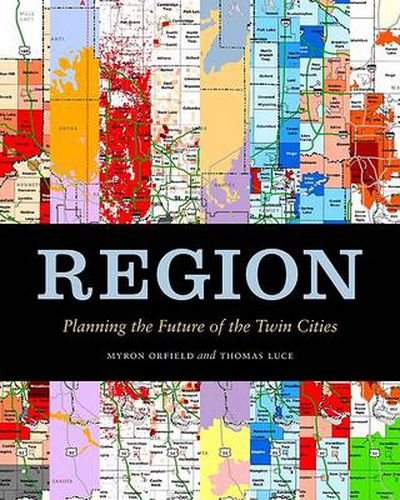Readings Newsletter
Become a Readings Member to make your shopping experience even easier.
Sign in or sign up for free!
You’re not far away from qualifying for FREE standard shipping within Australia
You’ve qualified for FREE standard shipping within Australia
The cart is loading…






The Twin Cities region contains 11 counties, 300 cities and townships, and 1,700 unique combinations of tax rates and public services. Historically, this fragmentation has made it extremely difficult to address the social, economic, and environmental problems that affect all parts of the region, yet the Minneapolis and St. Paul area has generally been held in high esteem as a model of regional cooperation. How do policy planners make it work-and is it working well enough?
In Region Myron Orfield and Thomas Luce examine both the successes and shortcomings of the Twin Cities Metropolitan Council’s regional planning and policy. Detailing the rapid demographic, commuting, and land use changes that are currently at work in the region, Orfield and Luce identify the new challenges faced by the cities and the suburbs and their overlooked interdependence. They thoroughly investigate the economic and political trends impacting Twin Cities residents’ quality of life-sprawl, population growth, economic and racial injustice, a lack of affordable housing, traffic congestion-and in particular how education demographic trends are solidifying segregation. Extensive maps, graphs, and charts accompany the authors’ argument for careful, coordinated regional development in the Twin Cities and explanations about how such an approach should be a model for other regions around the United States.
Confronting unsettling-sometimes shocking-realities of life in the Twin Cities, Orfield and Luce highlight the urgent need to create thriving integrated neighborhoods and job growth throughout the region, as well as the near impossibility of desegregating our neighborhoods and schools. Throughout this detailed and deeply researched work, they analyze the wide impact of planning failures and the promise of successful growth, and ultimately put forth trenchant policy recommendations for a better future-one where we live up to our social, environmental, and political ideals.
$9.00 standard shipping within Australia
FREE standard shipping within Australia for orders over $100.00
Express & International shipping calculated at checkout
The Twin Cities region contains 11 counties, 300 cities and townships, and 1,700 unique combinations of tax rates and public services. Historically, this fragmentation has made it extremely difficult to address the social, economic, and environmental problems that affect all parts of the region, yet the Minneapolis and St. Paul area has generally been held in high esteem as a model of regional cooperation. How do policy planners make it work-and is it working well enough?
In Region Myron Orfield and Thomas Luce examine both the successes and shortcomings of the Twin Cities Metropolitan Council’s regional planning and policy. Detailing the rapid demographic, commuting, and land use changes that are currently at work in the region, Orfield and Luce identify the new challenges faced by the cities and the suburbs and their overlooked interdependence. They thoroughly investigate the economic and political trends impacting Twin Cities residents’ quality of life-sprawl, population growth, economic and racial injustice, a lack of affordable housing, traffic congestion-and in particular how education demographic trends are solidifying segregation. Extensive maps, graphs, and charts accompany the authors’ argument for careful, coordinated regional development in the Twin Cities and explanations about how such an approach should be a model for other regions around the United States.
Confronting unsettling-sometimes shocking-realities of life in the Twin Cities, Orfield and Luce highlight the urgent need to create thriving integrated neighborhoods and job growth throughout the region, as well as the near impossibility of desegregating our neighborhoods and schools. Throughout this detailed and deeply researched work, they analyze the wide impact of planning failures and the promise of successful growth, and ultimately put forth trenchant policy recommendations for a better future-one where we live up to our social, environmental, and political ideals.